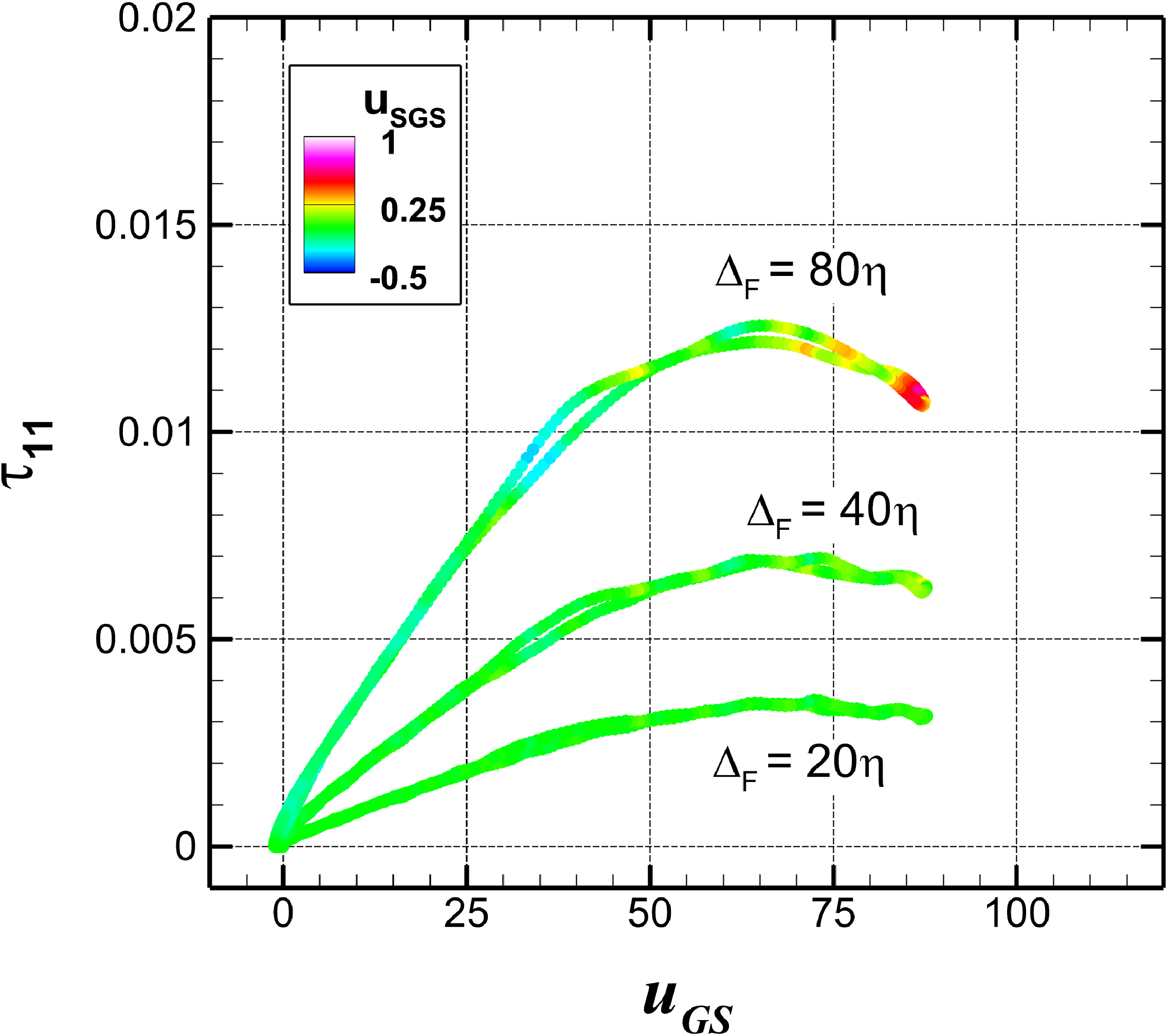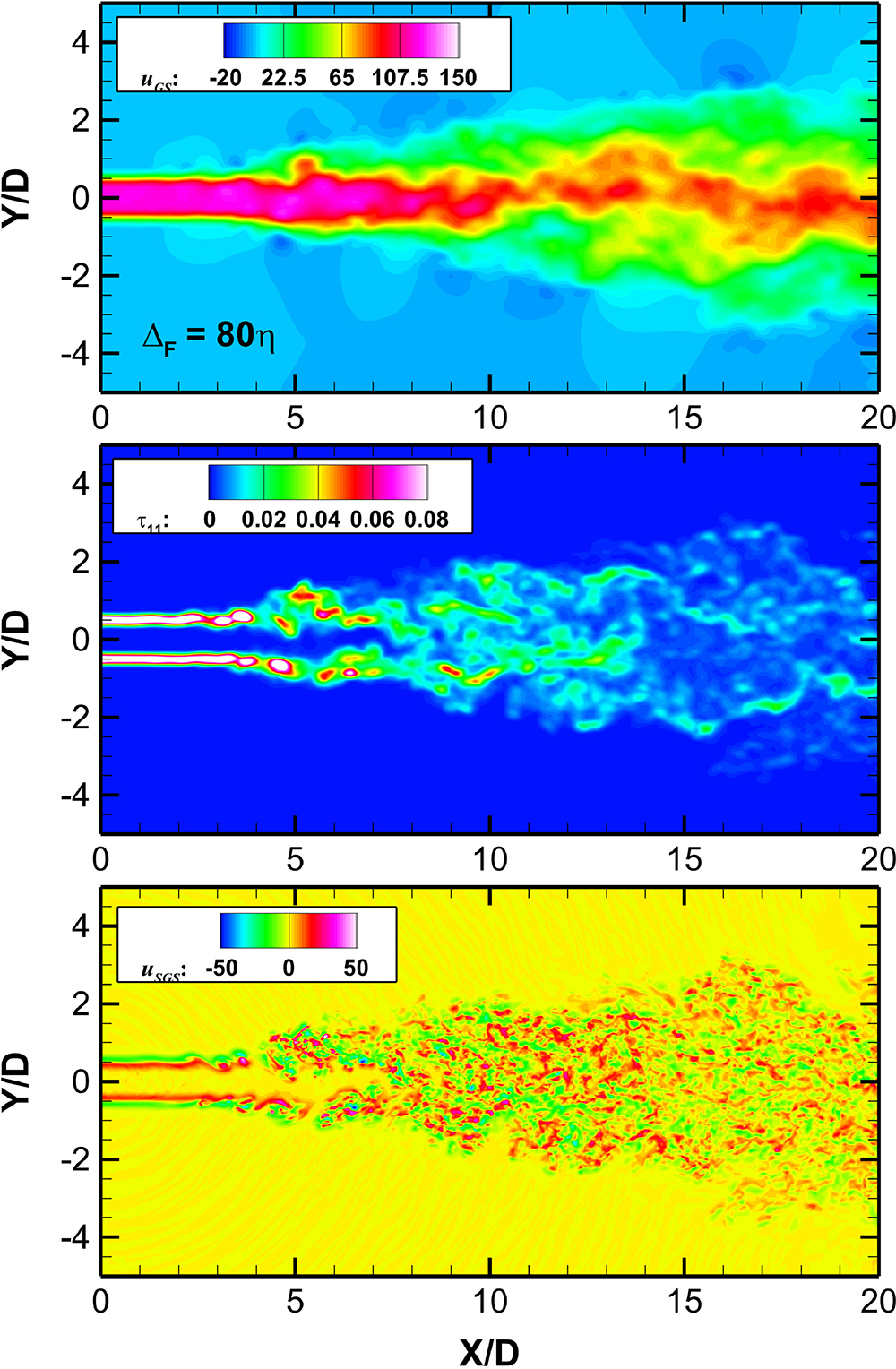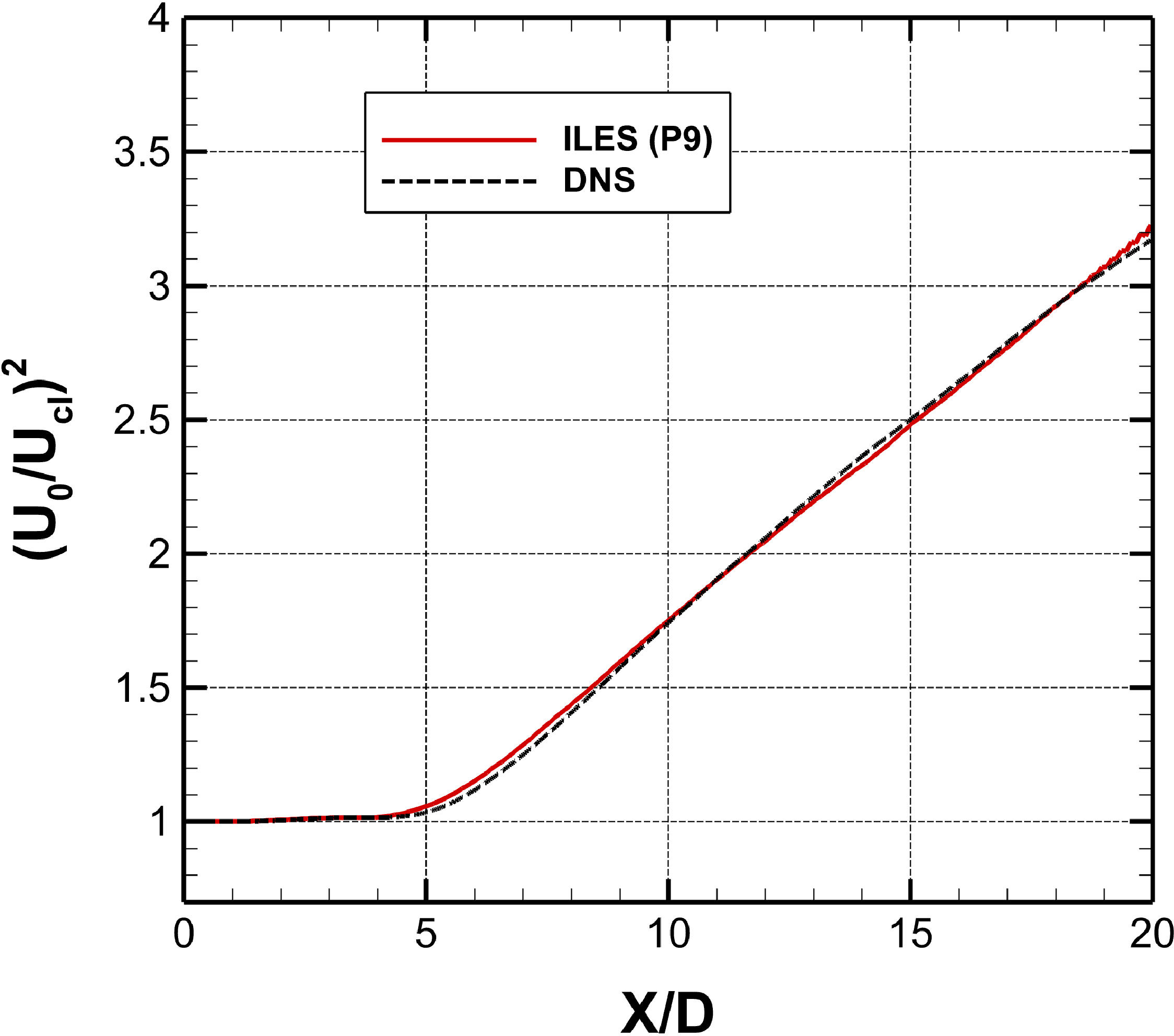SGS Stress Transport Equation-based SGS Modeling for Comprehensive LES Model
JAXA Supercomputer System Annual Report February 2021-January 2022
Report Number: R21ECMP08
Subject Category: Competitive Funding
- Responsible Representative: Shingo Matsuyama, Aeronautical Technology Directorate, Fundamental Aeronautics Research Unit
- Contact Information: Shingo Matsuyama(matsuyama.shingo@jaxa.jp)
- Members: Shingo Matsuyama
Abstract
In this study, we aim to realize a comprehensive LES that does not require any tuning for model parameters to the target flow field by solving the SGS stress transport equations. The SGS stress equations are derived exactly from the spatial filtering operation, but requires modeling for the unclosed terms contained in the equations. Therefore, in this study, the unclosed terms are modeled by a priori test using a DNS database of turbulent plane jet, and we try to establish a new LES model with SGS stress transport equations.
Reference URL
Please refer to https://kaken.nii.ac.jp/en/grant/KAKENHI-PROJECT-18K03963/ .
Reasons and benefits of using JAXA Supercomputer System
In order to model the unclosed terms in the SGS stress transport equations, a priori test using statistical data by DNS is required for high Reynolds number condition. For performing DNS under high Reynolds number condition of Re > 10000, a numerical mesh of the order of one billion points is required. Such large-scale simulation can be executed only on a supercomputer, and therefore, supercomputer system is indispensable for carrying out this research.
Achievements of the Year
-The analysis of the correlation of the SGS velocity component with respect to the grid-scale (GS) velocity component and SGS stress through an a priori test using the DNS database for turbulent plane jet at Re=104 (Fig.1), gave the prospect of constructing a table to evaluate the SGS velocity component with the GS velocity component and SGS stress as inputs (Fig.2).
-Since an accurate GS component is also important for the SGS model to work effectively, LES of turbulent plane jet was performed by Implicit LES (ILES), which does not use the SGS model. It was shown that the GS component can be accurately evaluated by using a high-order accurate interpolation scheme to achieve sufficient spatial resolution (Figs.3 and 4).

Fig.2: Correlation of the SGS velocity component (USGS) with respect to the GS velocity component (UGS) and SGS stress (tau11).

Fig.3: Results of ILES with ninth-order interpolation scheme and DNS for a turbulent plane jet at Re=104. Instantaneous contours of vorticity distribution in x-y plane are shown.
Publications
- Peer-reviewed papers
[1] Shingo Matsuyama, "Implicit Large-Eddy Simulation of Turbulent Planar Jet at Re = 104", under review in Computers & Fluids.
- Non peer-reviewed papers
[1] Shingo Matsuyama, "SGS Model is Just a Decoration. Users Can't Understand It", JAXA Special Publication: Proceedings of the 53rd Fluid Dynamics Conference / the 39th Aerospace Numerical Simulation Symposium, JAXA-SP-21-008, pp.167-173, 2022.
- Oral Presentations
[1] Shingo Matsuyama, "SGS Model is Just a Decoration. Users Can't Understand It", the 53rd Fluid Dynamics Conference / the 39th Aerospace Numerical Simulation Symposium, 2021.
[2] Shingo Matsuyama, "A Consideration on LES through a Comparison of Implicit LES and DNS", the 37th TSFD Sympoium, 2022.
Usage of JSS
Computational Information
- Process Parallelization Methods: MPI
- Thread Parallelization Methods: OpenMP
- Number of Processes: 750 - 1500
- Elapsed Time per Case: 460 Hour(s)
JSS3 Resources Used
Fraction of Usage in Total Resources*1(%): 2.63
Details
Please refer to System Configuration of JSS3 for the system configuration and major specifications of JSS3.
| System Name | CPU Resources Used(Core x Hours) | Fraction of Usage*2(%) |
|---|---|---|
| TOKI-SORA | 62471135.64 | 3.04 |
| TOKI-ST | 12659.39 | 0.02 |
| TOKI-GP | 0.00 | 0.00 |
| TOKI-XM | 0.00 | 0.00 |
| TOKI-LM | 0.00 | 0.00 |
| TOKI-TST | 0.00 | 0.00 |
| TOKI-TGP | 0.00 | 0.00 |
| TOKI-TLM | 0.00 | 0.00 |
| File System Name | Storage Assigned(GiB) | Fraction of Usage*2(%) |
|---|---|---|
| /home | 62.50 | 0.06 |
| /data and /data2 | 3840.00 | 0.04 |
| /ssd | 12.50 | 0.00 |
| Archiver Name | Storage Used(TiB) | Fraction of Usage*2(%) |
|---|---|---|
| J-SPACE | 0.00 | 0.00 |
*1: Fraction of Usage in Total Resources: Weighted average of three resource types (Computing, File System, and Archiver).
*2: Fraction of Usage:Percentage of usage relative to each resource used in one year.
ISV Software Licenses Used
| ISV Software Licenses Used(Hours) | Fraction of Usage*2(%) | |
|---|---|---|
| ISV Software Licenses(Total) | 390.94 | 0.27 |
*2: Fraction of Usage:Percentage of usage relative to each resource used in one year.
JAXA Supercomputer System Annual Report February 2021-January 2022




